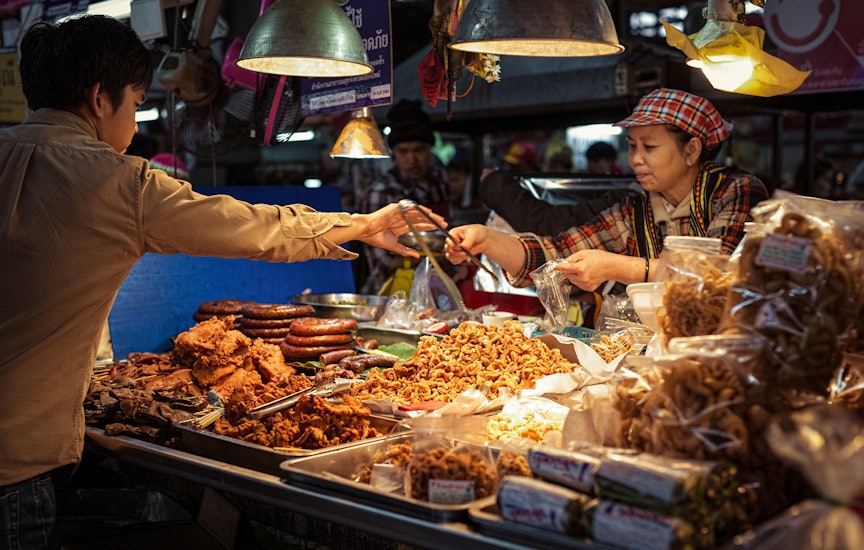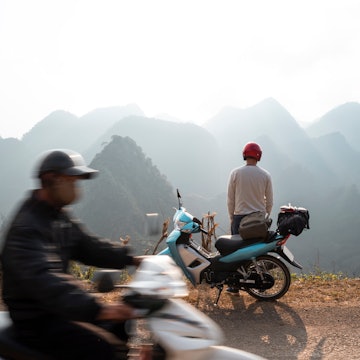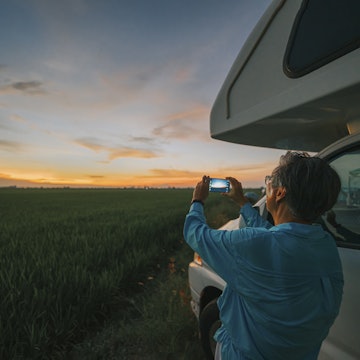
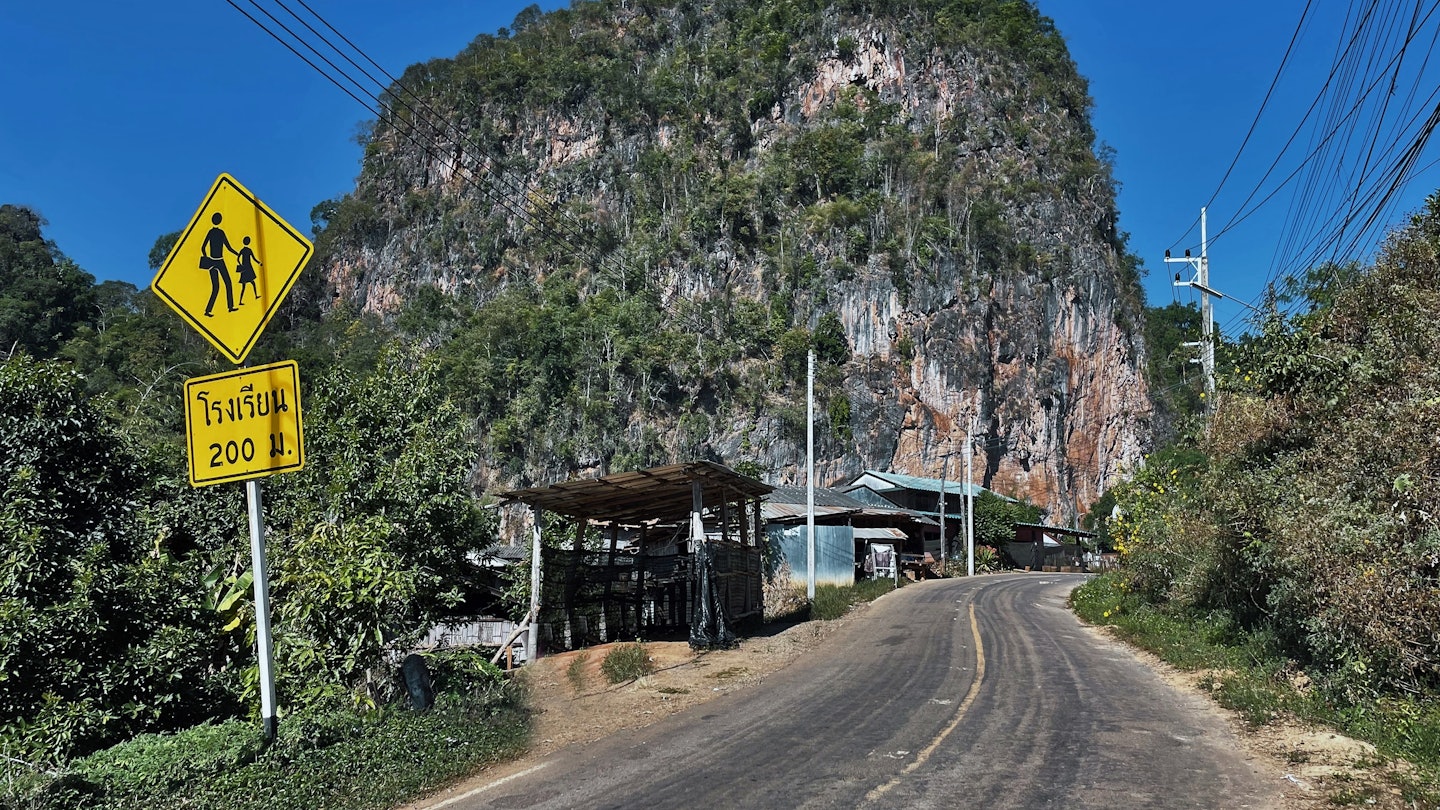
The Mae Hong Son loop in northwest Thailand. PhotoFra/Shutterstock
Thailand’s Mae Hong Son province remains one of the best areas to experience the country’s ethnic minority villages and breathtaking mountain scenery. And we’d argue that there’s no better way to take in its mist-covered passes and steamy jungles in the northwest corner of the country than tackling the famed 1860 curves of the Mae Hong Son Loop on a motorbike.
Trip length: 600km; the entire loop could ostensibly be done in four days, but we suggest stretching it out to at least a week, giving enough time to take in the various overnight stops.
When to arrive and where to end: Begin the trip in the northern Thailand tourist hub of Chiang Mai. From here riders can choose to travel the Mae Hong Son loop clockwise by heading south from Chiang Mai toward Hot along Rte 108 (an ideal choice if you're still building confidence as a rider), or counterclockwise via the more challenging northern half of the route. Either way, the full route is a loop, so you won’t miss a thing.
Things to know: The best time to tackle the Mae Hong Son loop is during the region’s two dry seasons, from November to February (cool) and March to June (hot), when rains are less likely to spoil the fun. The cool season is particularly nice as the weather makes it more pleasant to be outdoors, and the landscapes have wildflowers in bloom and multicolored leaves. This said, northern Thailand suffers from severe air pollution in late winter (January–March) due to local farmers burning stubble. The air clears up by April, which is the hottest month. Getting travel insurance is recommended, especially because good hospitals are non-existent outside of Chiang Mai, and you will have to be flown back to the city if you have a severe crash. Most rental companies insure their bikes under Thailand’s Compulsory Motor Insurance, which covers third parties and passengers, but make sure your vehicle comes with all the required paperwork because police in these remote locations have very short patience for foreigners.
Where to rent a motorcycle: Chiang Mai has an enormous variety of shops and rental outlets offering similar hardware. It’s certainly possible to complete the loop on one of Thailand’s ubiquitous 90cc automatic scooters, but bigger is usually better on this kind of ride – just remember to check your insurance to see what engine size you’re covered for. Something like a Kawasaki KLX150 off-road bike is good as it has an excellent suspension and ride quality. Try POP Big Bike Rental, where prices range from 1000 baht (฿) for smaller models to 3500฿ per day for the classy Honda Africa Twin. Other Chiang Mai bike shops worth considering include Classic Bike Tour Thailand, TBB Tours and Mango Scooter Rental.
What to pack: If planning to ride between July and September, carry proper rain gear or a poncho and be prepared to pause for monsoonal rains. Wearing a helmet is compulsory in Thailand, and riders will be fined if found without.
Here’s our ideal Mae Hong Son loop itinerary.

Stop 1: Pai
Vibes: Backpacker paradise
Do: Join a drum circle, attend a crystal healing session, float in an inner tube down the river or take in the magnificent sunset from a hilltop; it’s no wonder why the rural village of Pai is a backpacker magnet. Plan on spending at least a couple nights here to soak up the atmosphere and also to explore the lush countryside.
Eat: Dig into northern Thai cuisine at Larp Khom Huay Poo. The house special here is larp moo kua, northern Thailand’s take on larp (minced pork fried with herbs and spices). Accompanied by sticky rice, a platter of bitter herbs and an ice-cold beer, it’s one of the best meals on the loop.
Stay: Book one of the 38 small but stylish bamboo huts at Pai Village Boutique Resort. The huts dot an attractive, jungly, riverside garden, with a swimming pool and terraces with cushions for lounging.
The drive: (128km, 3-4 hours) After heading north from Chiang Mai, the turnoff to Pai and Rte 1095 is where the loop really begins – the subsequent 762 bends wind their way through the steep mountain trails, over hills, and through river valleys. The descent into Pai itself – through paddy fields so green they almost glow – is wonderful.

Stop 2: Soppong
Vibes: Caves, caves and more caves
Do: The greater district here – known as Pang Mapha – is home to the highest density of caves in Thailand, some of which contain prehistoric coffins and human remains. The easiest introduction is Tham Nam Lod, which can be visited via bamboo raft, and whose mouth fills with more than 300,000 swifts at sunset. You could spend days here exploring caves, trekking to hilltribe villages or kayaking along the river.
Eat: Cave Lodge serves Shan food and whole-wheat bread and muffins baked in a wood-fired oven.
Stay: Cave Lodge, open since 1984, is one of the more legendary places to stay in northern Thailand. It’s also the most convenient base to explore the area’s caves.
The drive: (50km, 1.5 hours) The shortest stretch of the loop is also arguably its most scenic – sharp hairpins and epic panoramas across a landscape that could be mistaken for the set of Jurassic Park.
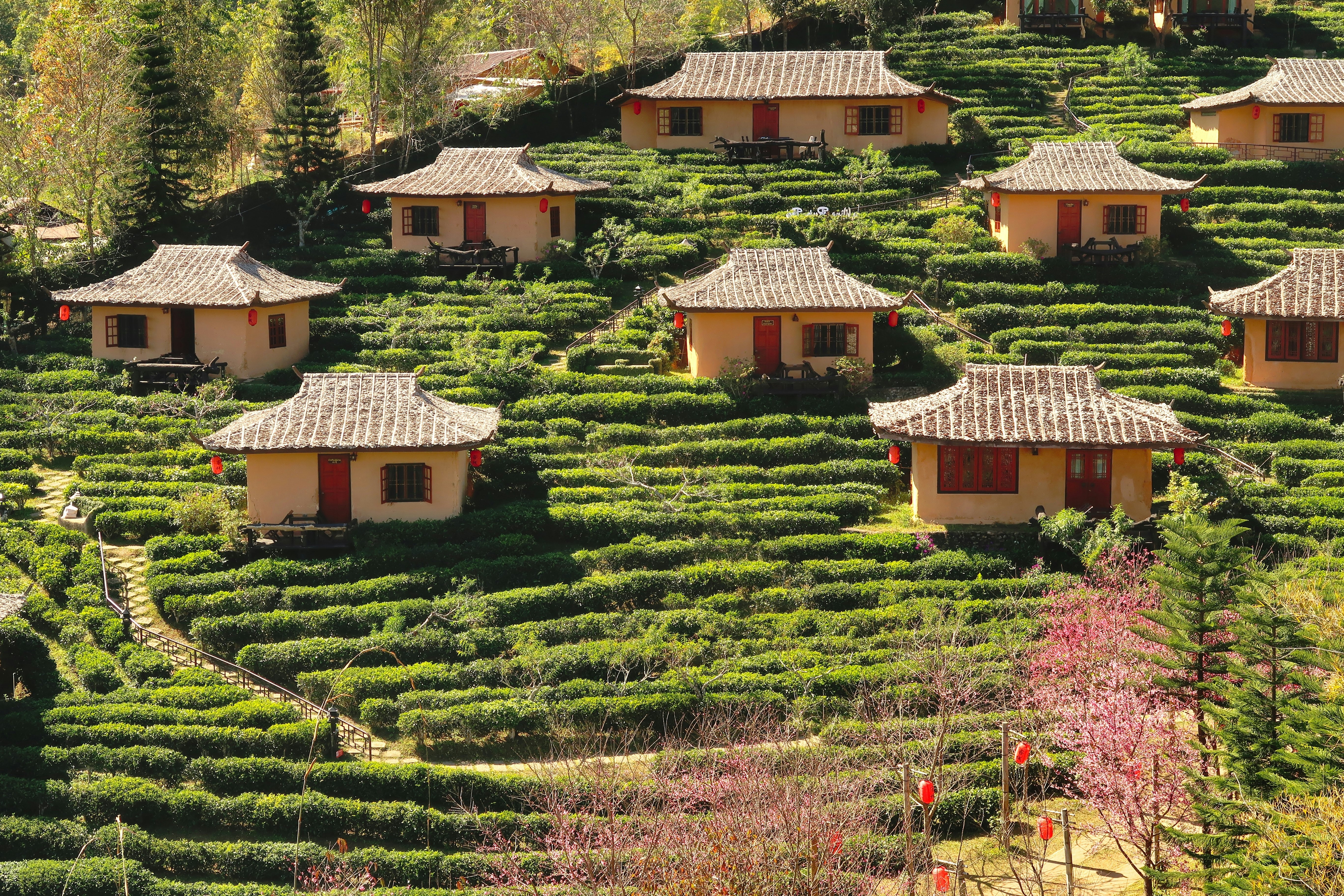
Stop 3: Mae Hong Son
Vibes: Shan culture
Do: Mae Hong Son is the largest urban center in the province and the natural place to dip into “city” life for a night or two. In particular, many of the town residents are Shan (also known as Tai or Thai Yai), an ethnic group related to the Thais, and Mae Hong Son is where you can encounter Shan culture, food and architecture. A worthwhile side trip is to the Chinese outpost village of Ban Rak Thai (also known as Mae Aw), right on the border with Myanmar. The drive is stunning, and in the village, tea plantations are laid out across the wild scrubland in a patchwork of browns and dark greens, Chinese script covers wooden teahouses and, as you reach the village itself, a serene glassy lake comes quietly into view.
Eat: A few Shan dishes are available at Baan Song Thai, a modern-feeling cafe just outside Mae Hong Son.
Stay: Perched at the edge of town, Sang Tong Huts takes the form of a handful of cozy bungalows clinging to a forested slope.
The drive: (75km, 2 hours) After some initial climbing and winding after Soppong, hairpins change into sweeping racetrack curves, which are exceptionally fun to ride. Once you approach Mae Hong Son town, the road levels out.

Stop 4: Khun Yuam
Vibes: Trading village
Do: The former trading post of Khun Yuam is the natural next stopping point on the loop. If that distance is too short for you, head inland on Rte 1263 to visit Nam Tok Mae Surin National Park, home to one of Thailand's most beautiful waterfalls. Layered upon multiple levels of rocks and hemmed by a vertical wall of karst rock and viridian jungle, Mae Surin waterfall's sheer 180m drop should be a reason good enough to convince any rider to take a break from the throttle.
Eat: Dad’s Garden, a roadside cafe just south of Khun Yuam, has a terrace looking over emerald green rice fields.
Stay: The cozy brick bungalows at Ban Farang are a classic motorcyclist’s stop on the loop.
The drive: (70km, 2 hours): Heading south from Mae Hong Son, the road is (relatively) flat and straight until the scenic village of Ban Pha Bong. From here, curves and hills continue until just outside of Khun Yuam.

Stop 5: Mae Sariang
Vibes: Riverside relaxing
Do: Perched on the Yuam River, Mae Sariang is a quiet, charming stop with some decent food and accommodation options. If you’re hungry for a side trip, consider the 100km round-trip to Mae Sam Laep, a remote-feeling border town on the Salaween River reached by taking a windy, rough ride through virgin jungle.
Eat: Mae Luang Pen, a northern Thai lunchtime-only grill shack at the southern end of Mae Sariang, is one of the best places to eat along the entire loop.
Stay: Book one of the simple but handsome teak rooms at Riverhouse Hotel.
The drive: (100km; 2–3 hours) The road that links Khun Yuam and Mae Sariang cuts through the most sparsely inhabited section of the loop. It’s almost relentlessly curvy, save for the last couple dozen kilometers before you reach Mae Sariang.

Stop 6: Mae Chaem
Vibes: Northern Thai country life
Do: Remote-feeling Mae Chaem is blissfully sleepy – the epitome of a traditional northern Thai village. These days it’s known for having some of the most beautiful tiered rice fields in the country. The ancient, folksy Buddhist murals at Wat Pa Daet are another highlight.
Eat: Grab noodles in the classic wooden structure that houses Jam Arom.
Stay: Despite its rambling, multistory form, Chaem Muang House feels more home than hotel.
The drive: (130km, 4 hours) This relatively long stretch features a decent balance of turns and straights. Upon reaching the edge of Op Luang National Park, head north on Rte 1088. Mae Chaem is the last chance saloon town before the long climb to the summit of Doi Inthanon, Thailand’s tallest mountain.

Stop 7: Chiang Mai
Vibes: Misty mountains
Do: From Mae Chaem, you’re well situated to visit Doi Inthanon, Thailand’s highest peak. It can be a misty ride up to the mountain summit, especially in the rainy season, but the wide, open roads make it easy to navigate for the most part. A very steep route carves its way through a swathe of cool forest and if the weather is clear at the summit you’ll be in for a magnificent spectacle.
Eat: Chiang Mai’s signature dish is khao soi, wheat-and-egg noodles in a curry broth, and the best bowl in town is Khao Soi Islam, located just east of the city’s moat.
Stay: After days in the saddle, indulge a bit and book a stay at Tamarind Village, an upscale, northern Thai-feeling compound located right in the middle of Chiang Mai’s walled old town.
The drive: (100km; 3 hours) It’s a simple ride back to Chiang Mai’s comforts on the overwhelmingly uninteresting Rte 108, but that said, it does give you time to reflect on that epic journey behind you.
Austin Bush researched the Northern Thailand chapter for the upcoming Thailand guidebook, which is scheduled to be published in August 2026.






